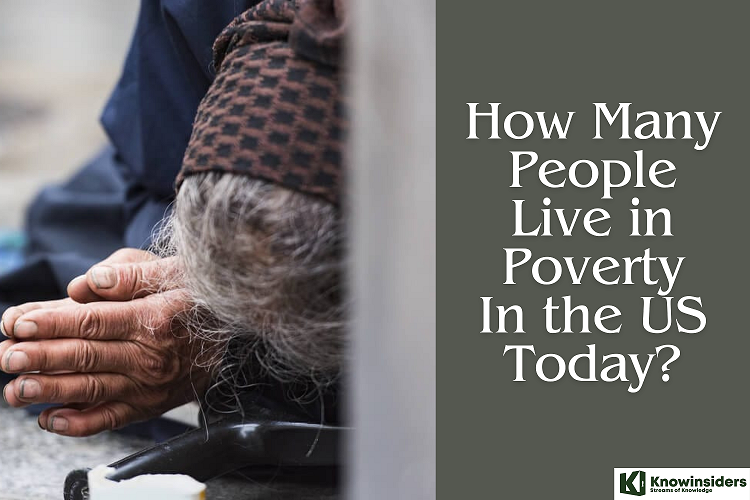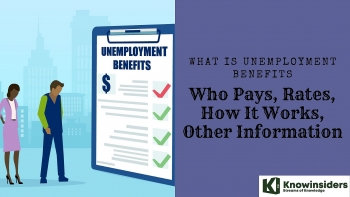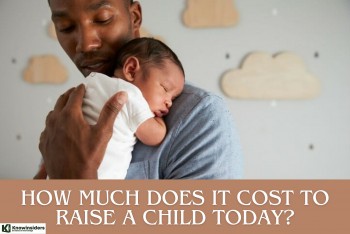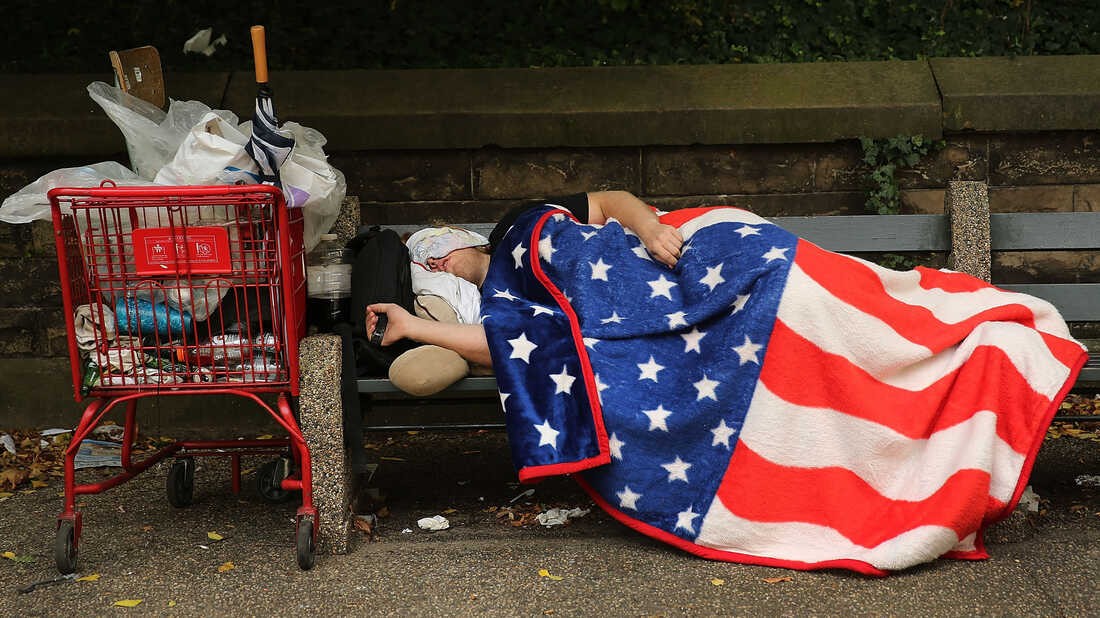How Many People Live in Poverty In the US Today?
| Summary |
In the United States, a nation known for its wealth and prosperity, the harsh realities of poverty and food insecurity remain significant challenges.
Despite being one of the world's largest economies, a substantial segment of the American population struggles daily with insufficient income and limited access to basic necessities, including food. This newspaper article delves into the latest data and insights to provide a comprehensive overview of these pressing issues.
Learn more: Top 10 States With Highest Poverty Rate In The US
 |
| How Many People Live in Poverty In the US Today? |
Overview of Poverty in the United States
According to the latest figures from the U.S. Census Bureau, the official poverty rate in 2021 was 11.6%. This translates to approximately 37.9 million people living below the poverty threshold. Poverty rates are observed to vary significantly across different population groups and geographical areas, with children, racial and ethnic minorities, and the elderly often disproportionately affected.
Children in Poverty: Around 16% of individuals under the age of 18 live in poverty.
Impact by Race and Ethnicity: Black and Hispanic communities experience higher rates of poverty, estimated at 19.5% and 17.1%, respectively.
Regional Differences: Southern states generally report higher poverty rates compared to other regions in the U.S.
How many people live in Poverty in the U.S?
Everyone earns less than the official poverty line set by the federal government, which for a family of four is approximately $25,700. People who hold down multiple jobs and work at minimum wage. older people with fixed incomes. Payroll employees were unexpectedly laid off. Millions of families reside in both urban and rural areas of our country.
11.4% of Americans were living in poverty as of 2020. It represents the first increase in the poverty rate in six years, up 1% from 2019. Millions of people lost their jobs or experienced other negative effects from COVID-19 as a result of the pandemic.
The current poverty rate is relatively low when compared to historical figures. Twenty-four percent of US households were living in poverty in 1959. The greatest decline in poverty occurred in the 1960s, with rates falling to 12.1% by 1969.
Since then, as the economy has expanded or contracted, so has the proportion of people living in poverty. By 2010, the Great Recession had reduced the poverty rate to 15.1%. After that, poverty dropped to a record low of 10.4% in 2019.
Learn more: How Many Homeless People Are in the US Today?
Facts about poverty in the US
♦ The "Poverty Line": What is it? The 2011 U.S. Census Bureau reports that the family's income is under $23,021, consisting of two adults and two children under the age of 18.
♦ Due to the increased likelihood of having to work or take care of family members, children living in poverty miss more school or stop going altogether.
♦ Students between the ages of 16 and 24 who come from low-income households are seven times more likely to drop out than students from higher-income families.
♦ Compared to young people who completed high school, who make up 24% of the population, young adults without a high school diploma (31%) are more likely to live in poverty.
♦ Forty percent of kids who live in poverty aren't ready for elementary school.
♦ The likelihood of developmental delays or learning disabilities in children living below the poverty line is 1.3 times higher than in non-poverty.
♦ African-American, Hispanic, and low-income students are already two years behind grade level by the end of the fourth grade. They fall four years behind by the time they get to the twelfth grade.
♦ Less than thirty percent of students with incomes in the lowest quintile enroll in four-year institutions. Less than 50% of those people graduate.
What Are Causes of Poverty in the US?
Income Inequality: There are large income gaps in the United States, and the wealthiest citizens hold the majority of the country's wealth. Numerous factors, such as varying access to capital, other resources, and higher-paying jobs, contribute to this inequality. Individuals with lower incomes frequently experience instability in their financial situation.
Lack of Educational Opportunities: One important factor that affects potential income is education. Inadequate access to high-quality education can limit career options and lower earning potential, creating a vicious cycle of poverty.
Economic Changes and Job Availability: Workers who lack the skills required for newer jobs are frequently displaced by economic shifts, such as the rise of service-oriented industries and the decline of manufacturing jobs. Underemployment or long-term unemployment may result from this displacement.
Healthcare Costs: Many Americans find that paying for medical expenses can be a major financial burden, especially if they lack sufficient health insurance. High medical expenses can cause unstable finances and impoverishment.
Systemic Racism: Historical and ongoing systemic racism affects minorities' access to various resources, including quality education, employment opportunities, and housing. This systemic bias contributes significantly to higher poverty rates among certain racial and ethnic groups.
Housing Affordability: Particularly for low-income families, the high cost of housing in many US cities can take up a sizable amount of household income. This may result in unstable housing and reduce the money available for other essentials.
Government Policies: The adequacy of social safety nets and economic policies can also impact poverty levels. Policies that do not adequately address the needs of the poorest or that favor wealthier segments can exacerbate poverty issues.
Family Dynamics: Poverty is more common in single-parent households, especially those headed by women, for a variety of reasons, including lower incomes, higher childcare expenses, and less work opportunities.
Poverty Levels Across the US
Poverty levels in the United States vary significantly by region, race, age, and family structure. Here's an overview of how poverty is distributed across different dimensions:
By Region: The Southern states generally have higher poverty rates compared to other regions. States like Mississippi, Louisiana, and New Mexico frequently report some of the highest rates of poverty.
By Race and Ethnicity: African Americans and Hispanics experience higher poverty rates compared to their White and Asian counterparts. Systemic inequalities, such as differences in access to quality education and job opportunities, contribute to these disparities.
By Age: Children are particularly vulnerable to poverty, with higher poverty rates than the general population. Elderly individuals also face significant risks, especially those who rely solely on Social Security for their income.
By Family Structure: Single-parent households, especially those headed by single mothers, are more likely to be living below the poverty line. The financial burden of single parenthood, coupled with caregiving responsibilities, often limits earning potential.
Food Insecurity in the United States
Food insecurity among children in the United States represents a critical concern for the nation's future. Despite various federal programs aimed at mitigating hunger, a significant number of American children face uncertainties about when or where they will get their next meal. This not only affects their health and development but also their academic performance and overall well-being.
Food insecurity, defined as the lack of consistent access to enough food for an active, healthy life, is closely linked to poverty. According to the United States Department of Agriculture (USDA), in 2022, an estimated 10.2% of U.S. households were food insecure at some point during the year. This equates to about 13.5 million households.
Severity of Food Insecurity: 3.8% of American households were classified as having very low food security, which indicates that certain members of the household consumed less food and had irregular eating schedules as a result of financial hardship.
Children Affected: Compared to households without children, those having children reported a noticeably higher rate of food insecurity (14.3%).
Government Response and Social Programs
The federal government, along with various state and local entities, has instituted several programs aimed at alleviating poverty and food insecurity. Key initiatives include:
Supplemental Nutrition Assistance Program (SNAP): This program helps millions of low-income Americans purchase food.
National School Lunch Program: Provides free or reduced-price meals to eligible children at schools.
Temporary Assistance for Needy Families (TANF): Offers financial assistance and support services to families in need.
Strategies to Combat Poverty and Hunger
Enhancing Social Safety Nets: Programs like SNAP, TANF, and the National School Lunch Program are crucial in providing immediate relief to those in poverty and facing hunger. Strengthening these programs can help address immediate needs more effectively.
Economic and Employment Opportunities: Policies aimed at creating job opportunities, improving wages, and ensuring worker protections are vital for reducing poverty. Educational and vocational training programs are also key in helping individuals adapt to an evolving job market.
Healthcare Access: Expanding access to affordable healthcare is essential, as medical costs can be a significant burden that pushes families into poverty.
Housing Affordability: Initiatives to make housing more affordable and accessible can help alleviate one of the most significant expenses for low-income families.
Community Initiatives: Local efforts, such as community gardens and food banks, can play a critical role in addressing hunger directly within communities. These efforts often fill gaps that larger programs might not cover.
Policy Reforms: Advocating for policy reforms that address the root causes of poverty and food insecurity, such as income inequality and systemic racism, is essential for long-term solutions.
How Does Poverty Affect A Child?A person's life can be significantly and permanently impacted by child poverty. Poverty as a child can have negative effects on an individual's health, educational attainment, and ability to obtain employment as an adult. Children who live in poverty are also more likely to face housing issues, limited access to healthcare, and food insecurity. It can be challenging to break the cycle of poverty caused by all of these factors. Child poverty has an impact on more than just the individual. Additionally, there's a greater chance that impoverished kids will become impoverished adults, which could be detrimental to the economy as a whole. Poverty among children can also result in higher crime rates and social issues. To enhance the lives of individual children and the general well-being of society, it is crucial to address the problem of child poverty. |
Conclusion
Despite the extensive network of social safety nets, challenges such as inflation, unemployment, and the rising cost of living continue to undermine efforts to reduce poverty and food insecurity. Experts emphasize the need for targeted policies that not only address the symptoms but also tackle the underlying causes of economic disparity.
As the U.S. grapples with these enduring issues, the role of informed policies, community action, and sustainable economic growth becomes ever more critical in ensuring that all Americans have access.
 U.S Insurance and Unemployment Benefits: Who Pays, Rates, How It Works U.S Insurance and Unemployment Benefits: Who Pays, Rates, How It Works Payments made to unemployed people by authorized agencies are known as unemployment benefits, sometimes referred to as unemployment insurance, unemployment payment, unemployment compensation, or just ... |
 How to Boil Chicken Without Water, But with Salt, Lime Leaves, Lemongrass, Onions How to Boil Chicken Without Water, But with Salt, Lime Leaves, Lemongrass, Onions There are numerous methods for boiling chicken. According to Vietnamese, KnowInsiders.com explains how to boil oysters without using water, but with salt, lemongrass, lime leaves, ... |
 How Much Does It Cost To Raise a Child in the U.S Today? How Much Does It Cost To Raise a Child in the U.S Today? Raising a child involves various stages and aspects, each with its own set of costs and considerations. Here's an exploration of the financial implications of ... |
























